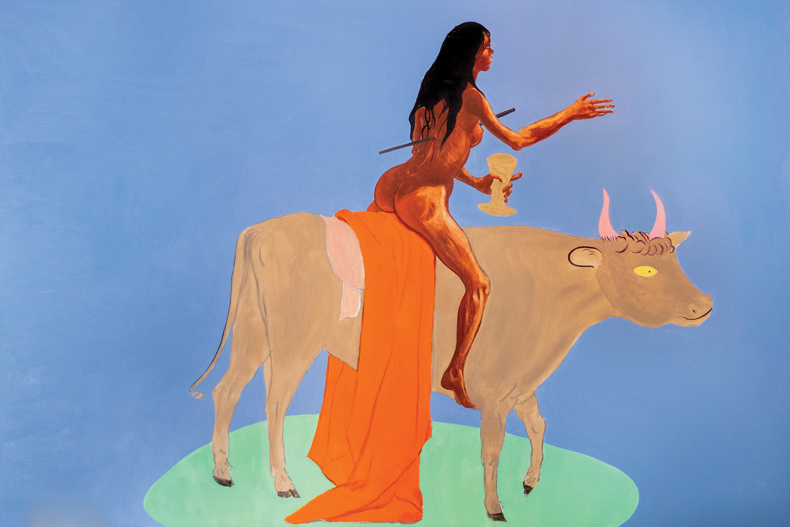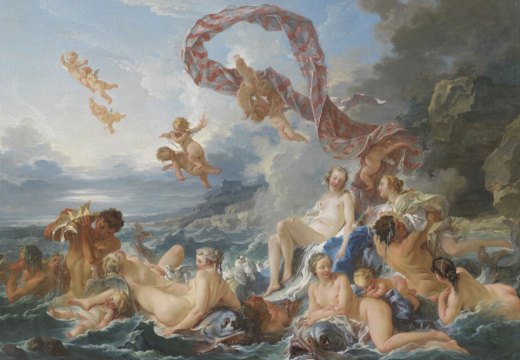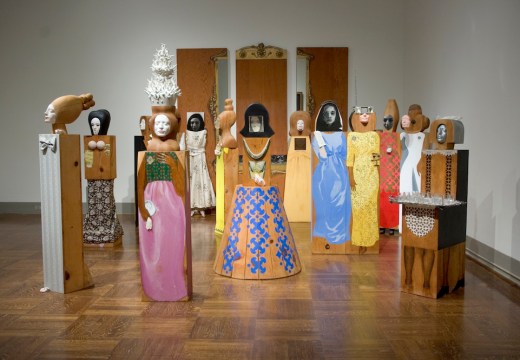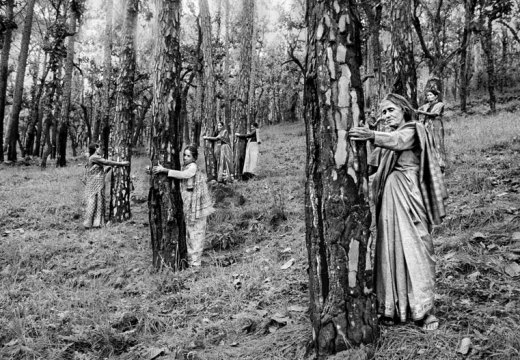From the October 2023 issue of Apollo. Preview and subscribe here.
The Norval Foundation, based in Cape Town, is best known for its programme dedicated to understanding and preserving 20th- and 21st-century African art. Its exhibition programme has ranged from Irma Stern to Zanele Muholi, and the Norval sponsors the largest art prize in Africa. It has only been running for the past five years and might not normally come to the attention of the wine-lover. That changed this summer when the Norval Foundation established the NF50 Wine Club. For a yearly fee, which goes towards the institution’s Learning Centre, the 50 annually-approved members receive bespoke wines from five of South Africa’s most renowned independent winemakers: Callie Louw, Eben Sadie, Chris and Andrea Mullineux, Chris and Suzaan Alheit, Hannes and Nathalia Storm. Small production means that these growers’ wines are difficult to find at the best of times; the wines for NF50 are not available commercially. The seriousness of this event has led me to think that it requires its own term: oenophilanthropy. This goes beyond the act of donating wine as it is a means of giving back through wine that marshals a method better known to the art world.
Auctions and fundraisers involving art and wine are not unusual. The connections between the two are many. Wine and art are both intimately concerned with questions of taste. They mirror each other as luxury collectables; each is appreciated and each (hopefully) appreciates. Yet the NF50 is especially compelling because it underscores links that are less often considered. By creating wines for the club, the winemakers are thinking about creativity and expression in the same way that artists do. And by donating these wines, they might also be said to become arts philanthropists themselves.
Each of the labels for NF50 club bottles will be decorated with artwork from an African artist. The Mozambique-born painter Cassi Namoda’s commission for the inaugural year, Heartbreak takes new forms, depicts a female figure astride a cow, holding a goblet.
Between them, the NF50 winemakers represent a broad range of South African winemaking. Callie Louw is known for working with demanding terrain south-east of Riebeek-Kasteel in Swartland. Louw favours traditional farming methods. For his NF50 wine, Louw wanted to make ‘something funky that you can’t get anywhere else’. Despite challenges including a heatwave during ripening, the wine is crisp with a pure profile.
Eben Sadie has long been regarded as the pioneering winemaker of his generation. He made the Nabot Parcel Swartland Syrah from a tiny bush vineyard planted on a high pH site on pure granite soil in the Paardeberg. The vineyard has since been ripped out, since it had become uneconomical, meaning it will never be possible to make such a wine again.
With their Leeu Passant wines, Chris and Andrea Mullineux replicate winemaking methods of the 1950s and ’60s – a project of ‘deconstruction and reconstruction’, according to Andrea. Participating in the NF50 was ‘a no-brainer’, she says. They wanted to join ‘the nation’s winemaking leaders’, to combine ‘African wine with African art’ and to ‘hopefully inspire future leaders to become involved in art and maybe wine’. Their single-barrel Cabernet Sauvignon from their 2021 vintage was grown on the Helderberg’s lower-mid slopes during the coldest year on record.
‘Ultimately, the land is the artist, and you are the tool to help get that into the bottle,’ says Chris Alheit of Alheit Vineyards. His Alheit Chenin Blanc is crafted from grapes from two famous vineyards: Paardeberg, Hermanus and Sinai Hill on False Bay. ‘You just don’t know what two Chenins will do when they meet each other in a bottle,’ he says. ‘That’s a creative experiment.’
The Pinot Noir grape can often feel like an experiment to winemakers; prized for its delicacy in aroma and flavour, it is one of the hardest to grow. But it is the preferred grape of Hannes and Nathalia Storm from Storm Wines. For their Vrede’s Finest, they blended 25 per cent of a 2018 vintage with 75 per cent from 2008 – a year of incredibly low yield. Such fractional adjustments are their own form of creative decision-making.
This is the first wine club created by a cultural institution. Norval wants it to become a sustainable model of philanthropy that they can use to increase student visitors and educational programmes. As Andrea Mullineux says, ‘Art educates and inspires. Wine also inspires. It’s a cultural elixir.’
From the October 2023 issue of Apollo. Preview and subscribe here.
Unlimited access from just $16 every 3 months
Subscribe to get unlimited and exclusive access to the top art stories, interviews and exhibition reviews.














![Masterpiece [Re]discovery 2022. Photo: Ben Fisher Photography, courtesy of Masterpiece London](http://www.apollo-magazine.com/wp-content/uploads/2022/07/MPL2022_4263.jpg)
It’s time for the government of London to return to its rightful home